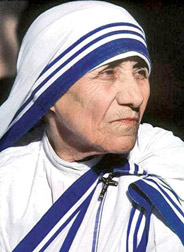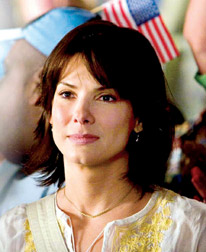
Greenpeace Turns Forty
Nalaka Gunawardene and Vindana Ariyawansa
 Greenpeace is an internationally active and highly visible
environmental organisation whose goal is to ‘ensure the ability of the
Earth to nurture life in all its diversity’. Having started small in a
coastal Canadian city 40 years ago, Greenpeace now operates offices or
national affiliates in over 40 countries around the world and has an
international coordinating body located in Amsterdam, The Netherlands. Greenpeace is an internationally active and highly visible
environmental organisation whose goal is to ‘ensure the ability of the
Earth to nurture life in all its diversity’. Having started small in a
coastal Canadian city 40 years ago, Greenpeace now operates offices or
national affiliates in over 40 countries around the world and has an
international coordinating body located in Amsterdam, The Netherlands.
Over the past four decades, Greenpeace has promoted a new brand of
radical environmentalism that directly campaigns against certain
policies, technologies and products that its members believe to be
harmful to the environment and people. Not everyone agrees with their
positions or arguments, but despite this, many people admire their
headline-grabbing strategies that are innovative, sometimes
confrontational and always media savvy.
Today’s Wiz Quiz starts off with a few questions about Greenpeace
that just turned 40. In the rest of our questions, we salute the Nobel
Peace Prize winning environmentalist Wangari Maathai who just passed
away.
 1. Greenpeace evolved from the peace movement and anti-nuclear
protests in the West the late 1960s and the early 1970s. The origins can
be traced to an anti-nuclear group in Vancouver, British Columbia in
Canada in the early 1970s. On 16 September 1971, this group sent a
chartered ship Phyllis Cormack, renamed Greenpeace, from Vancouver
Harbour to oppose American testing of nuclear devices in Amchitka,
Alaska. What was the name of this group that later adopted the name
Greenpeace? 1. Greenpeace evolved from the peace movement and anti-nuclear
protests in the West the late 1960s and the early 1970s. The origins can
be traced to an anti-nuclear group in Vancouver, British Columbia in
Canada in the early 1970s. On 16 September 1971, this group sent a
chartered ship Phyllis Cormack, renamed Greenpeace, from Vancouver
Harbour to oppose American testing of nuclear devices in Amchitka,
Alaska. What was the name of this group that later adopted the name
Greenpeace?
2. Greenpeace today consists of Greenpeace International based in
Amsterdam, The Netherlands, and 28 regional offices operating in 45
countries as at August 2011. The regional offices work largely
autonomously under the supervision of Greenpeace International, whose
executive director is elected by its board members. The current director
of Greenpeace International is a South African human rights activist,
who is the first African to hold that post. Who is he?
3. In 1978, Greenpeace acquired a former British government trawler
and used it in their high profile action campaigns related to marine
issues, such as those against seal hunting, whaling and nuclear weapons
testing during the late 1970s and early 1980s. On July 10, 1985, the
ship was sunk whilst in harbour in the port of Auckland, New Zealand, by
operatives of the French intelligence service (DGSE) killing one of the
activists. This was to prevent her from interfering in a French nuclear
test in Moruroa atoll in the Pacific. What was the name of this activist
ship?
4. Mother Teresa (1910 - 1997) was born as Agnes Gonxha Bojaxhiu in a
European country, but she became known and admired as a Roman Catholic
nun of Indian citizenship who founded the Missionaries of Charity in
Calcutta, in 1950. For over 45 years, she attended to the poor, sick,
orphaned and dying, while guiding the Missionaries of Charity’s
expansion, first in India and then in other countries. Following her
death, she was beatified by Pope John Paul II and given the title
Blessed Teresa of Calcutta. What was Mother Teresa’s country of birth,
where Mother Teresa day celebrated every year on October 19?
 5. Mansoor Ali Khan, also known as ‘Tiger Pataudi’, who died on 22
September 2011 aged 70, is considered by many as the greatest Indian
cricket captain. He lost the sight of one eye when he was 20 years old,
but continued to play cricket and performed well at highest level, and
became the youngest Indian to have been test cricket captain. He was
also the last Nawab of Pataudi (traditional ruler) until 1971, when
India abolished royal entitlements through the 26th Amendment to the
Constitution of India. In December 1969, Mansoor married actress
Sharmila Tagore, great-grandniece of Rabindranath Tagore. Their eldest
son is a Bollywood superstar. Who is he? 5. Mansoor Ali Khan, also known as ‘Tiger Pataudi’, who died on 22
September 2011 aged 70, is considered by many as the greatest Indian
cricket captain. He lost the sight of one eye when he was 20 years old,
but continued to play cricket and performed well at highest level, and
became the youngest Indian to have been test cricket captain. He was
also the last Nawab of Pataudi (traditional ruler) until 1971, when
India abolished royal entitlements through the 26th Amendment to the
Constitution of India. In December 1969, Mansoor married actress
Sharmila Tagore, great-grandniece of Rabindranath Tagore. Their eldest
son is a Bollywood superstar. Who is he?
6. This 20th Century American mathematician developed theories that
were later used in a variety of real world applications — market
economics, computing, evolutionary biology, artificial intelligence,
accounting, politics and military theory. He shared the 1994 Nobel Prize
for Economics for his work on his game theory and has battled paranoid
schizophrenia for many years. His life story was made into the movie ‘A
Beautiful Mind’ (2001) directed by Ron Howard, where Russell Crowe
played the mathematician’s role. Who is this genius?
7. Which British athlete, born in 1958, was the first to be
Commonwealth, European, Olympic, World Champion and world record holder
in his event all at the same time? Clue: he excelled in the decathlon, a
combined event in athletics consisting of ten track and field events.
8. What is the medical term given to the study of the cause and
treatment of abnormal tissue growth in human body?
9. Who is he? Hailing from a prominent Dutch Burgher family, he
studied at Richmond College, Galle and Cambridge University in the UK. A
Shakespearean scholar, author, playwright and critic, he was the first
Professor of English of the University of Ceylon in 1936, and later
became the first Dean of Arts in the newly established University in
Peradeniya in 1952. He adapted and produced a number of classics of
Western drama in pre and post independent Ceylon and inspired a whole
generation of local dramatists and actors. Upon retirement to England in
1956, he wrote several books on history and culture.
10. The Lake House (2006) was a romantic drama film written by David
Auburn and directed by Alejandro Agresti that starred Keanu Reeves and
Sandra Bullock - acting together for the first time since Speed (1994).
It is a strange story about an architect living in 2004 and a doctor
living in 2006 who meet via letters left in a mailbox at the lake house
they have both lived in at separate points in time. The film is, in
fact, a Hollywood remake of a South Korean movie. What was the original
movie?
 11. October is when the winner of the Nobel Prizes is announced every
year. In the entire 110-year history of the Nobel Peace Prize, only one
person has been awarded the Prize posthumously, having been nominated
before his tragic death. Who is this person, who won the Prize in 1961
and about whom then US President John F Kennedy said: “I realise now
that in comparison to him, I am a small man. He was the greatest
statesman of our century.” 11. October is when the winner of the Nobel Prizes is announced every
year. In the entire 110-year history of the Nobel Peace Prize, only one
person has been awarded the Prize posthumously, having been nominated
before his tragic death. Who is this person, who won the Prize in 1961
and about whom then US President John F Kennedy said: “I realise now
that in comparison to him, I am a small man. He was the greatest
statesman of our century.”
12. 2011 marks 60 years since the world’s first commercially marketed
computer was released in the United States. It was designed principally
by Presper Eckert and John Mauchly, the inventors of the ENIAC which was
the first general purpose electronic computer but whose applications
were limited to military purposes. The commercial version, built by the
Remington Rand Corporation and unveiled in March 1951 was first used by
the US Census Bureau in June 1951. It was used for inventory, payroll,
insurance and other business applications. It was not exactly compact:
it was 14.5 feet long, 7.5 feet wide and 8 feet high - large enough to
fill a room! Originally priced at US Dollars 159,000, it rose in price
until they were between $1,250,000 and $1,500,000. A total of 46 systems
were built and delivered. What was the name given to this computer?
13. Kenya’s Nobel laureate Professor Wangari Maathai died on
September 25, 2011 in Nairobi, Kenya, while undergoing cancer treatment
at the age of 71. She won the Nobel Peace Prize in 2004 for promoting
environmental conservation, women’s rights and transparent government.
She was the first African woman to get the award. What is the name of
the women-led conservation organization she founded in 1977 in Kenya,
which has spread cross Africa and has planted 20 to 30 million trees on
that continent?
14. The first Permanent Representative of Sri Lanka to the United
Nations headquarters in New York was appointed in early 1956 after the
country (the Ceylon) was finally admitted to the inter-governmental body
as a member in late 1955. He served in this position from February 1956
to April 1958. Who was he?
15. Michael Ondaatje’s 1992 novel, The English Patient, was adapted
into a critically acclaimed Hollywood film under the same name in 1996.
The film won nine Academy Awards for the year 1996, including Best
Picture and Best Director. Who wrote the screenplay and also directed
the film?
Last week’s answers
1. In the Westminster Central Hall in London, UK
2. Hamilton Shirley Amerasinghe (1913 - 1980)
3. Dag Hjalmar Agne Carl Hammarskjöld (1905 - 1961)
4. Purahanda Kaluwara (Death on a Full Moon Day) (1998) directed by
Prasanna Vithanage
5. Punchi Palle Gasavena
6. Charita Tunak
7. Sofia Coppola
8. Theodor Seuss Geisel
9. Freida Pinto
10. World Wide Fund for Nature (WWF) UK
11. Mars Exploration Rover - Opportunity
12. Southern Tanzania
13. Barry Unsworth, for his novel Sacred Hunger
14. Groucho Marx (1890 - 1977)
15. Columbia University in New York City |



